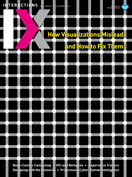Authors:
Florian Mueller, Josh Andres, Joe Marshall, Dag Svanæs, m. schraefel, Kathrin Gerling, Jakob Tholander, Anna Martin-Niedecken, Elena Segura, Elise van den Hoven, Nicholas Graham, Kristina Höök, Corina Sas
In late 2017, 23 researchers and academics from Europe, Australia, and the U.S. gathered for a week to discuss the future of body-centric computing. Dagstuhl, a nonprofit center for computer science research located in a rural area in Germany, hosted the seminar in a picturesque 18th-century castle. Insights The goal of the seminar was to discuss the future of this novel area of interaction design: what it means to design interactive technology when centering on the human body. This area evolved in part with the emergence of movement-, physiological-, and bio-based sensors and actuators, after which followed the…
You must be a member of SIGCHI, a subscriber to ACM's Digital Library, or an interactions subscriber to read the full text of this article.
GET ACCESS
Join ACM SIGCHIIn addition to all of the professional benefits of being a SIGCHI member, members get full access to interactions online content and receive the print version of the magazine bimonthly.
Subscribe to the ACM Digital Library
Get access to all interactions content online and the entire archive of ACM publications dating back to 1954. (Please check with your institution to see if it already has a subscription.)
Subscribe to interactions
Get full access to interactions online content and receive the print version of the magazine bimonthly.






